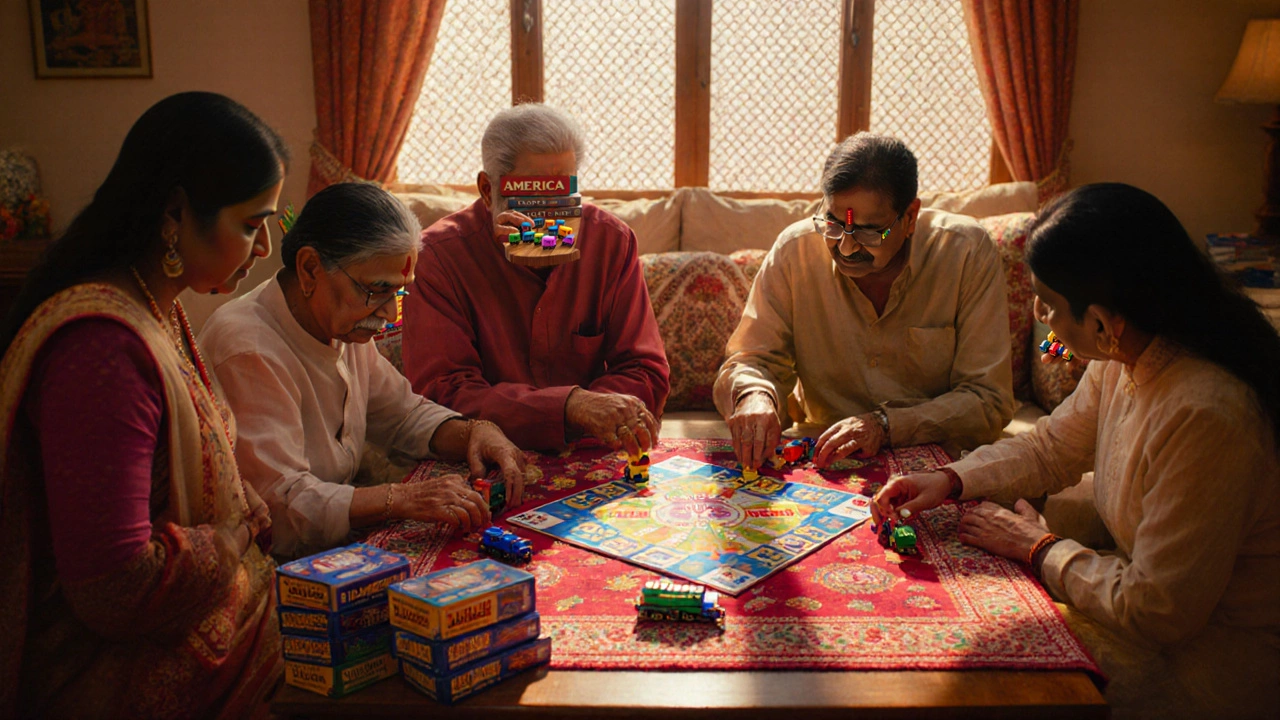Ticket to Ride America Train Calculator
This tool helps you determine how many train pieces each player receives in Ticket to Ride America based on the number of players.
Ticket to Ride: America is a board game that lets players build railway routes across the United States, released in 2006 by Days of Wonder. The game’s core mechanic revolves around laying colored train pieces on a modular map to claim routes, while completing destination tickets for points. If you’ve ever wondered how many trains each player starts with, this guide breaks down the numbers, compares them to other editions, and shows why the count matters for your strategy.
Game Overview and Core Entities
The Ticket to Ride franchise consists of more than a dozen map editions. Each version swaps the map, route lengths, and occasionally the component count, but the basic set stays the same: a board, colored train pieces, destination tickets, and a rulebook. In the American edition, the map showcases 36 major cities from New York to Los Angeles, connected by 185 routes of varying length.
Key entities you’ll encounter while playing include:
- Player - the person managing a hand of cards, a pile of train pieces, and a set of destination tickets.
- Train piece - a small plastic car used to claim a route; each player has a personal set in a unique colour.
- Destination ticket - a card that specifies two cities and a point value; completing it adds points, missing it subtracts points.
- Map board - the printed board showing cities, routes, and bonus connection points.
- Rulebook - a booklet that explains setup, turn order, scoring, and end‑game conditions.
- Game component set - the collection of all physical pieces shipped in the box.
Exact Train Piece Count per Player
In Ticket to Ride America, each player receives 45 train pieces. The pieces come in a single colour-red, blue, green, yellow, or black-depending on the player count and the chosen colours in the box. The 45-car allotment is printed on the component list that accompanies the rulebook and is confirmed by the manufacturer’s official inventory sheet.
Why 45? The designers calculated the maximum number of route spaces a single player could theoretically claim: if you owned every route on the board, you’d need 209 train cars (the sum of all route lengths). Since no real game reaches that extreme, 45 provides a comfortable buffer for most strategies while ensuring a player runs out of trains before the board fills up, triggering an end‑game condition.
Comparison with Other Ticket to Ride Editions
| Game Edition | Train Pieces per Player | Map Cities | Release Year |
|---|---|---|---|
| America | 45 | 36 | 2006 |
| Europe | 45 | 30 | 2006 |
| Asia | 40 | 20 | 2017 |
| Nordic Countries | 45 | 29 | 2009 |
| Rails & Sails (USA) | 38 | 39 | 2015 |
The table shows that America shares the same 45‑train count with most classic editions (Europe, Nordic Countries). The Asia version trims the count to 40, reflecting its smaller map and shorter routes. The “Rails & Sails” variant goes even lower, nudging players toward tighter route planning.

How Train Count Shapes Gameplay
Having a finite pool of 45 trains creates a built‑in tension. Two main mechanics hinge on that number:
- Route Blocking. If you claim a long, high‑value route early, you reduce the number of trains left for opponents, forcing them to detour or abandon certain tickets.
- End‑Game Trigger. The game ends when any player runs out of trains or when the draw pile of train cards depletes. Managing your train stock therefore becomes a strategic priority: you don’t want to be forced to stop early unless you’re already ahead on points.
Experienced players monitor the remaining train count on each opponent’s “train rack” (the plastic holder on the board). A sudden drop from 45 to, say, 22 often signals an imminent game close, prompting a shift to high‑value tickets or a defensive play to block opponents.
Practical Tips for Managing Your 45 Trains
- Prioritize Short, High‑Scoring Routes. A 2‑space route uses only two trains but can net 2‑4 points, leaving you with more material for longer connections later.
- Keep an Eye on Ticket Completion. Each completed destination ticket awards points regardless of how many trains you spent. Balance the train cost against the ticket’s point value.
- Avoid Over‑Claiming. It’s tempting to fill the board, but every extra train spent is a train you can’t use to block opponents later.
- Use “Tunnel” and “Ferry” Rules Wisely. In the America edition, ferries require locomotive cards; using them early can consume both train pieces and valuable locomotives, so plan accordingly.
- Reserve Trains for the Endgame. When only a few trains remain, consider hoarding them to complete a last‑minute ticket that could swing the final score.
Related Concepts and Extensions
Beyond the base game, several expansions add new train pieces and modify the count. For instance, the Ticket to Ride: 1910 expansion includes a “train car” variant that adds extra locomotive cards, effectively increasing the usable train pool if you include the new “extra train” tokens. However, the core 45‑train rule still applies; the extra tokens simply give you more locomotive flexibility, not more total cars.
Another related entity is the Ticket to Ride: USA board, which uses the same 45‑train count but introduces “double‑train” routes that require two separate sets of train pieces on the same segment, doubling the strategic depth.
Frequently Asked Questions
How many train pieces does each player start with in Ticket to Ride America?
Each player receives 45 coloured train pieces at the start of the game.
Can I add more trains to the game?
Officially, the game is balanced around 45 trains per player. Some fans 3D‑print extra cars for aesthetic reasons, but adding more can upset the intended tension.
Does the train count differ in other Ticket to Ride editions?
Most classic editions (America, Europe, Nordic Countries) also use 45 trains. Smaller maps like Asia use 40, while some expansions adjust the number to match new mechanics.
When does the game end in relation to the train pieces?
The game ends immediately when a player has placed all 45 of their trains on the board, or when the train card draw pile runs out. That trigger forces a final scoring round.
Are there any strategies that focus on conserving trains?
Yes. A common strategy is to secure high‑value, short routes early, then shift to longer, point‑rich routes only when you have a clear lead. This minimizes train expenditure while maximizing points.
